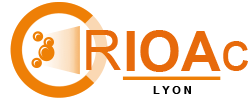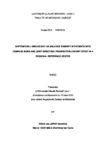Daptomycin > 6mg/kg/day as salvage therapy in patients with complex bone and joint infection: prospective cohort study in a regional reference center
Daptomycin does not have approval for the treatment of bone and joint infections (BJI). The Infectious Diseases
Society of America guidelines propose daptomycin 6 mg/kg/d as alternative therapy for prosthetic joint infection,
whereas recent data support the use of higher doses in these patients.
Between 2010 and 2013, consecutive patients receiving daptomycin >6 mg/kg/d for complex BJI were included in
a prospective cohort study in a French regional reference center. Factors associated with treatment failure were
determined by univariate Cox analysis and Kaplan-Meier curves.
Forty-three patients (age, 61±17 years) received a mean dose of 8±0.9 mg/kg/d of daptomycin, for 81±59 days
(range, 6-303 days). Most had chronic (n=37, 86%) implant-associated (n=37, 86%) BJI caused by coagulasenegative
staphylococci (n=32, 74%). A severe adverse event (SAE) occurred in 6 patients (14%), including 2
eosinophilic pneumonia concomitant with daptomycin overdose (Cmin >24 mg/L). Outcome was favorable in 30
(77%) of the 39 clinically assessable patients. Predictors for treatment failure were age, non-optimal surgery and
daptomycin withdrawal for SAE.
In conclusion, prolonged high-dose daptomycin therapy was effective in patients with complex BJI, but associated
with a higher incidence of eosinophilic pneumonia than expected. Added to the fact that off-label use of high
doses of daptomycin requires a specific clinical and biological monitoring, optimal surgery remains the
cornerstone of the medico-surgical strategy, reinforcing the importance of the management of these patients in a
reference regional center.



